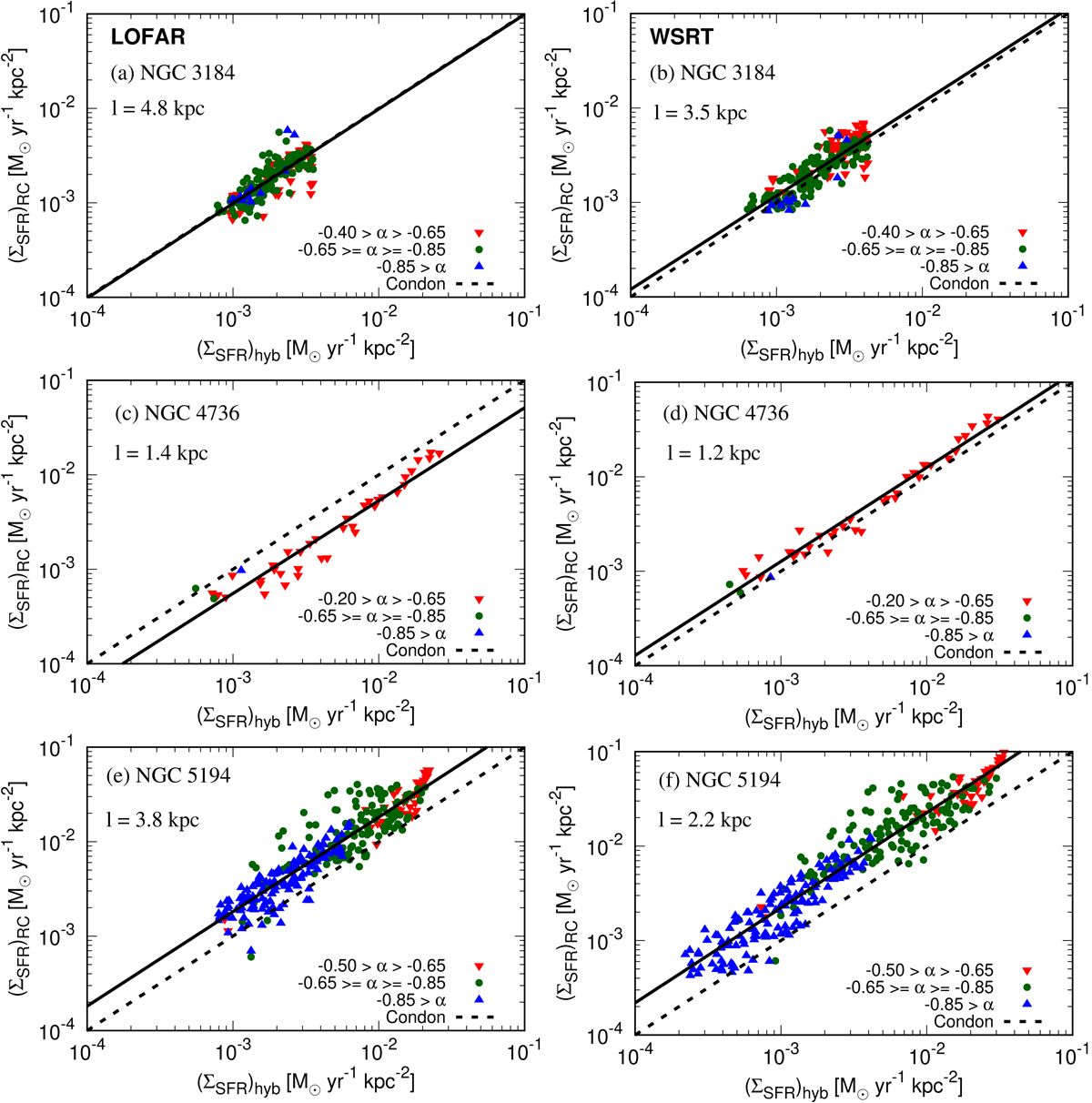Fig. 8.

Linearised (ΣSFR)RC–(ΣSFR)hyb relation after convolving the (ΣSFR)hyb map with a Gaussian kernel to simulate the diffusion of CREs. Left panels: results for the 140 MHz LOFAR data; right panels: results for the 1365 MHz WSRT data. The length of the Gaussian kernel, l (=FWHM/2), is noted as well. Panels a and b: results for NGC 3184, panels c and d: for NGC 4736, and panels e and f: for NGC 5194. Each data point represents a 1.2 × 1.2 kpc2 regions that has been obtained once from the hybrid ΣSFR map (abscissa) and once from the radio ΣSFR map (ordinate). Shape and colour represent different radio spectral indices between 145 and 1365 MHz. Downward-pointing red triangles represent regions with young CREs (−0.65 < α < −0.20); filled green circles represent regions with CREs of intermediate age (−0.85 ≤ α ≤ −0.65); and upward-pointing blue triangles represent regions with old CREs (α < −0.85). Solid black lines show the best-fitting relation and dashed lines show the Condon relation. A 3σ cut-off was applied in all maps.
Current usage metrics show cumulative count of Article Views (full-text article views including HTML views, PDF and ePub downloads, according to the available data) and Abstracts Views on Vision4Press platform.
Data correspond to usage on the plateform after 2015. The current usage metrics is available 48-96 hours after online publication and is updated daily on week days.
Initial download of the metrics may take a while.


